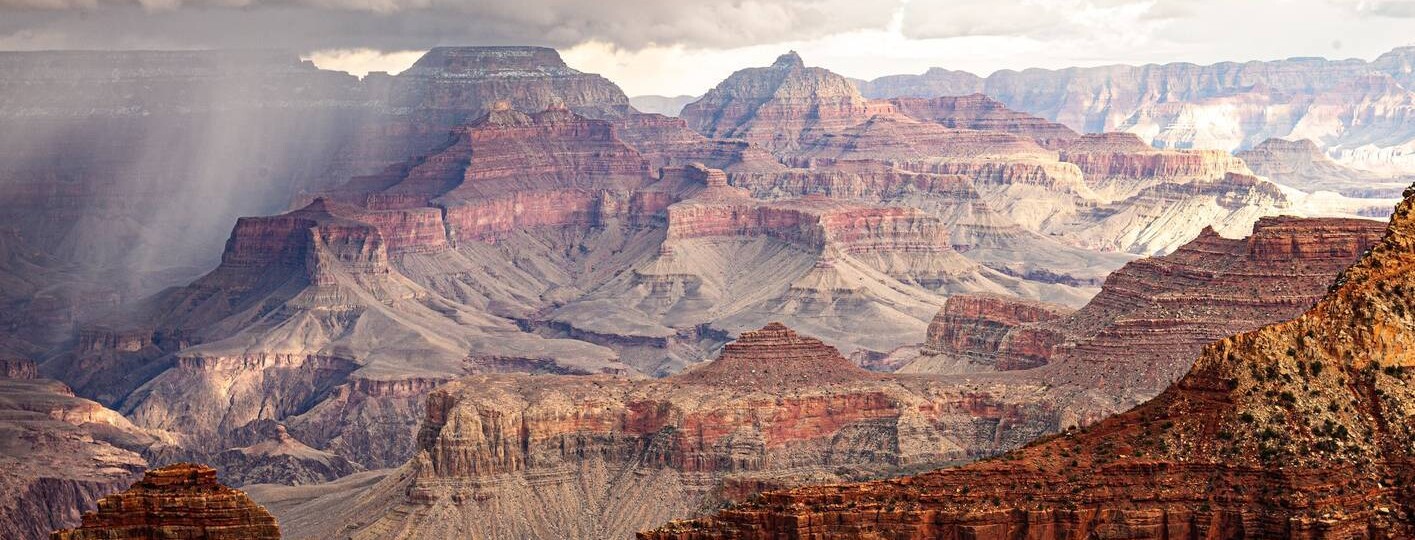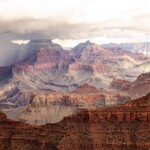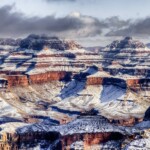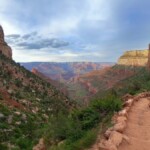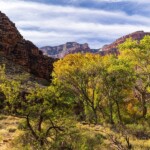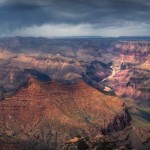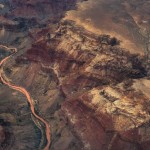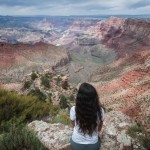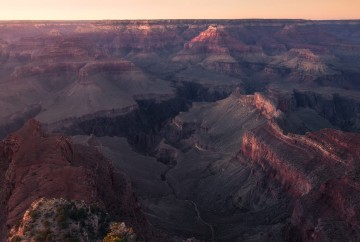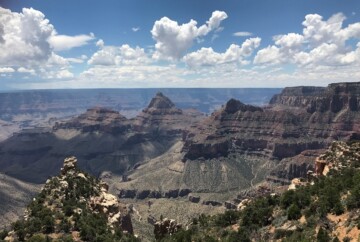Are you planning your adventure through the breathtaking landscapes of Grand Canyon National Park? Well, let’s start by considering the best time to visit the Grand Canyon. This iconic natural wonder is a year-round destination with a multitude of experiences that are influenced by its ever-changing weather. So, when you’re gearing up for your Grand Canyon journey, timing is key to making the most of your visit!
In this guide, I will delve into the nuances of each season to discover the secrets of the canyon’s climate month by month. From the crisp air of winter in the North Rim to the scorching heat of summer at Phantom Ranch, I’ll explore every part of the Grand Canyon based on metrics like the average temperatures, precipitation levels, and other factors that define each period. Please note that while I’ll mention the North Rim and West Rim here and there, the statistics presented here are exclusively related to the South Rim as it is the most popular part of Grand Canyon National Park.
After discussing the best time to visit Grand Canyon National Park, I’ll walk you through the optimal time for your desired activities, whether it’s hiking along the rim, capturing breathtaking photographs, or stargazing under the vast Arizona sky. Armed with practical tips for visiting the Grand Canyon, you’ll be able to make memories that last a lifetime. So, let’s dive in:
Best time to visit the Grand Canyon – Weather by month
Forget the stereotype of the Grand Canyon being just a hot desert. The weather here is like a box of assorted chocolates – surprising, diverse, and sometimes downright chilly. People wonder about the best time to visit the Grand Canyon, thinking it’s always warm. But, hold your hats – each part has its own vibe!
While some areas enjoy a warmer climate, other areas, especially the North Rim, tend to be cooler throughout the year. So, choosing which Grand Canyon rim is best for you requires you to understand the unique characteristics of the canyon’s environment. But first, let’s check this chart that breaks down the Grand Canyon Village’s monthly weather as a reference:
Average low temp. | 18°F | 21°F | 15°F | 32°F | 39°F | 47°F | 54°F | 53°F | 47°F | 36°F | 27°F | 20°F |
Average temp. | 29°F | 33°F | 33°F | 46°F | 54°F | 64°F | 69°F | 67°F | 62°F | 50°F | 39°F | 31°F |
Average high temp. | 41°F | 45°F | 51°F | 60°F | 70°F | 81°F | 85°F | 82°F | 77°F | 65°F | 52°F | 43°F |
Rainy days | 6 | 6 | 5 | 4 | 6 | 6 | 12 | 12 | 7 | 6 | 2 | 8 |
Average precip. | 1.32in | 1.55in | 1.38in | 0.93in | 0.66in | 0.42in | 1.81in | 2.25in | 1.56in | 1.10in | 0.94in | 1.63in |
| Best time to visit the Grand Canyon – Weather by month | ||||||||||||
Average temperature in the Grand Canyon
It’s important to understand the distinct climates of the North Rim versus the South Rim. When choosing the best time to visit the Grand Canyon, the temperature variations play a pivotal role. The South Rim boasts summer highs ranging from 80°F-90°F and winter lows of 15°F-25°F, creating a diverse climate suitable for various activities.
On the other hand, the North Rim experiences cooler summers, with highs between 70°F-80°F, and colder winters with lows ranging from 10°F-20°F. It’s a refreshing escape during the warmer months. However, it become inaccessible during the winter due to the snow.
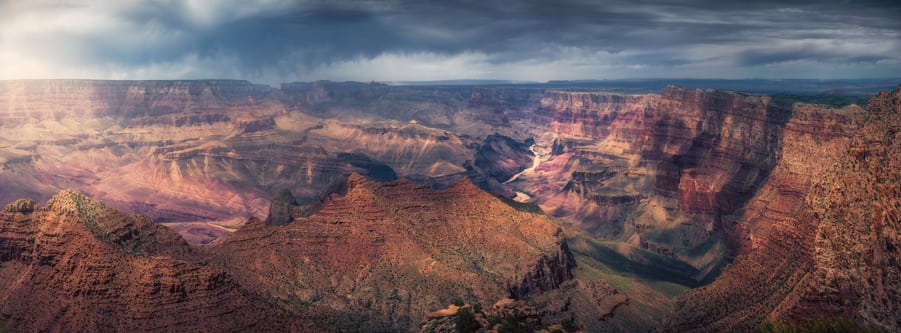
Average temperature in the Grand Canyon
The West Rim is an inviting destination, but avoid the summer since it brings scorching temperatures exceeding 100°F. Winter offers pleasant temperatures with lows ranging from 30°F to 40°F, but the best time to visit the Grand Canyon West Rim is spring and fall when temperatures range from the mid-70°Fs to high-80°Fs.
Below the rim temperatures are also important to consider when planning to hike the rim-to-rim trail. Avoid the summer, with temperatures that can reach the 100°Fs. At the bottom of the canyon the lower you can get in the winter is 30°F.
As you see, choosing the best time to visit the Grand Canyon also depends on individual preferences and tolerance for temperature extremes. Whether basking in the warmth of the South Rim’s summer or visiting the North Rim in a cooler ambiance, each season offers a unique and captivating experience amidst the canyon’s unparalleled beauty.
Average precipitation in Grand Canyon
The average precipitation in the Grand Canyon varies by elevation and location. Elevated forested rims witness winter snowfall, similar to the high desert climates of Tucson. The Inner Gorge, along the Colorado River at the bottom of the canyon, mirrors temperatures akin to low-elevation Arizona deserts. Grand Canyon National Park swings between dry spells and two annual precipitation peaks in winter and late summer.

Average precipitation in Grand Canyon
On the South Rim, annual precipitation is under 16 inches, complemented by 60 inches of snow. The North Rim experiences 27 inches of rainfall and 144 inches of snow. Phantom Ranch, located at an elevation of 2,500 feet, has less than 10 inches of annual precipitation. So, based on this information, the best time of year to visit the Grand Canyon South Rim is during the spring and fall when temperatures are mild. For the North Rim, the ideal window is between mid-May and mid- October, since they close during the winter due to heavy snowfalls.
In any case, if you don’t want to see the canyon in the rain, I recommend avoiding the Grand Canyon monsoon season, which typically falls between mid-June and mid-September.
Spring weather in the Grand Canyon
Many believe that spring is the best season to visit the Grand Canyon, offering a sweet spot between comfortable temperatures and captivating scenery. With daytime highs ranging from 50°F to 70°F, it provides an ideal climate for exploration.
Summer weather in the Grand Canyon
Summer in the Grand Canyon brings soaring temperatures, typically ranging from 50°F to 90°F. During this time, the Canyon gets intense sunlight, creating a striking interplay of shadows and colors. While the North Rim enjoys cooler temperatures than the South Rim, both regions offer spectacular views.
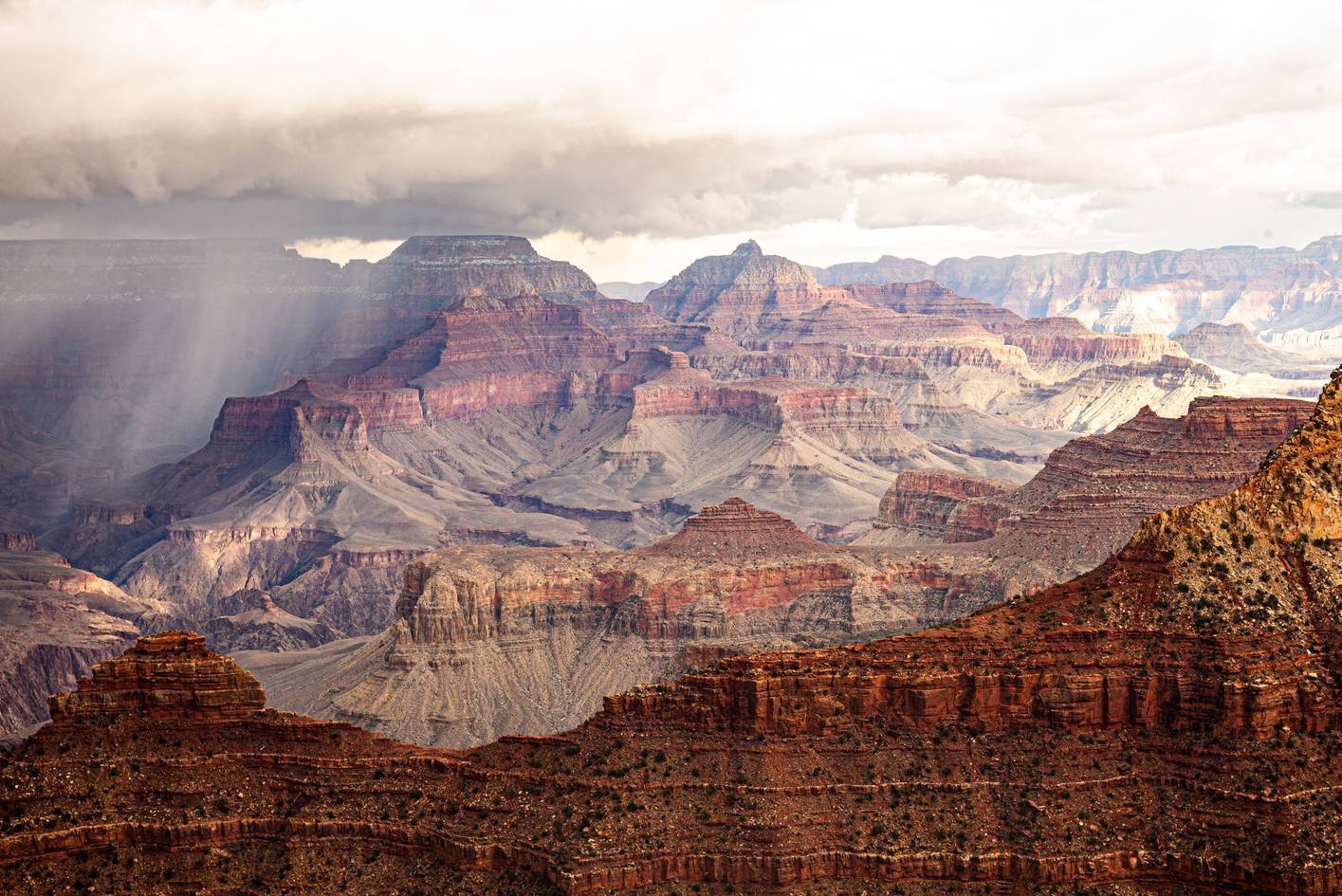
Summer weather in the Grand Canyon
Summer is the busiest time for visitors seeking the Grand Canyon’s iconic vistas and hiking trails. I highly recommend keeping hydration and sun protection a top priority since the heat can be quite intense.
That said, mid-June to mid-September is monsoon season in the Grand Canyon, so be prepare to get wet as the summer advance.
Fall weather in the Grand Canyon
For many nature enthusiasts, fall is the best time to visit the Grand Canyon, with the summer heat gracefully giving way to a cooler and more pleasant period. Average high temperatures gradually decline from the 60s in September to the 50s by November along the Rim. Along the river, temperatures shift from the 90s in September to nearly 70°F by November.
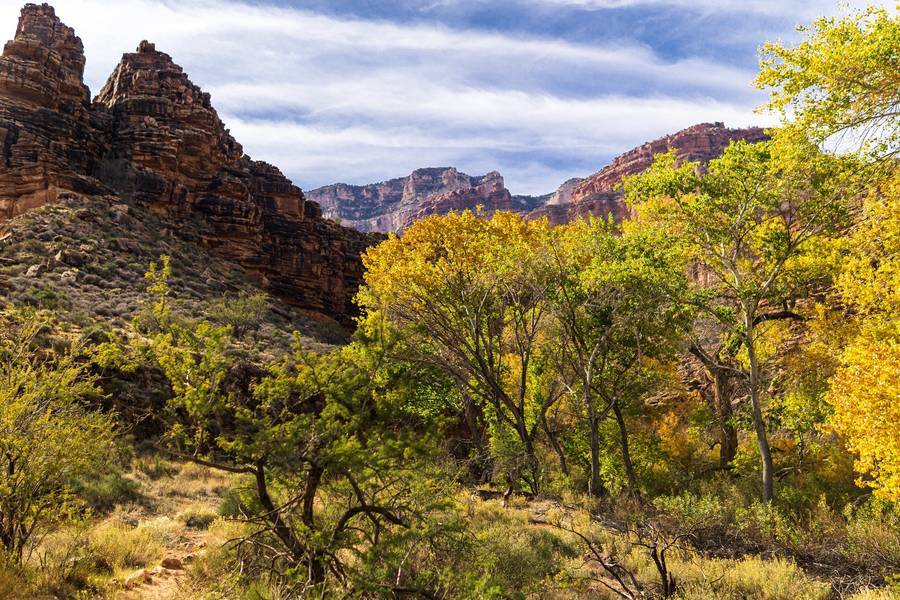
Fall weather in the Grand Canyon
While freezing temperatures are common on the Rim in the fall, the river area enjoys milder temperatures in the 50s and 70s. Fall brings drier conditions, especially after mid-September, creating a serene and visually stunning landscape. The best time to visit the Grand Canyon in the fall, in my opinion, is during October, when you’ll find a spectacular display of warm hues, transforming the landscape into a captivating canvas of reds, yellows, and oranges.
Winter weather in the Grand Canyon
For those seeking a more tranquil experience, winter reveals a quieter side of this natural wonder, especially at the South Rim. While the Grand Canyon North Rim remains closed throughout winter, Grand Canyon West, home to the Skywalk, welcomes visitors.
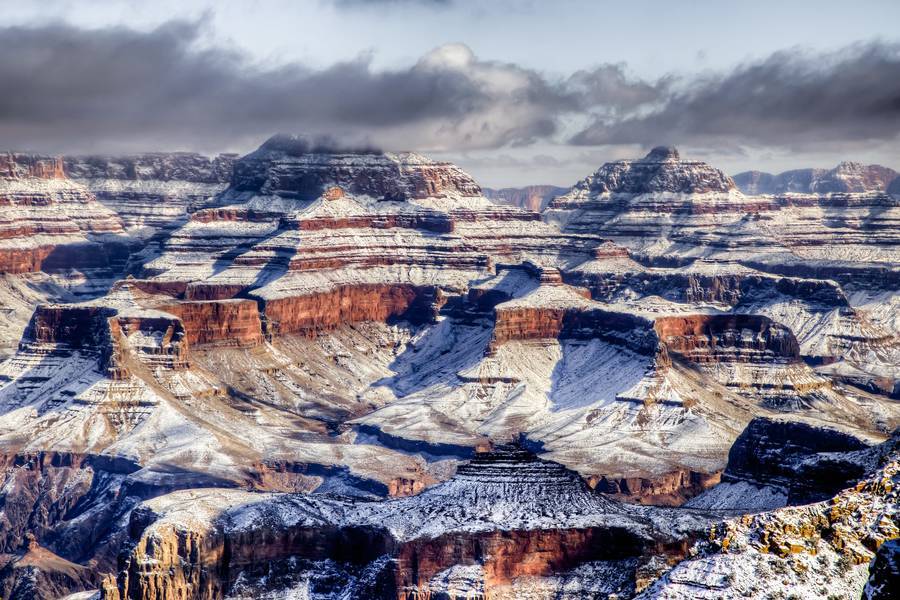
Winter weather in the Grand Canyon
The South Rim is also open during winter. Despite the chill, the crisp air enhances the canyon’s beauty, transforming it into a mesmerizing winter wonderland. But you should keep in mind that visiting the Grand Canyon in the winter requires necessary preparations, including weather-appropriate clothing and winter gear.
When is the best time to visit the Grand Canyon?
The best time to visit the Grand Canyon is during spring (March to May) or fall (September to November) when temperatures are mild, and crowds are smaller. While winter is the best time to visit the Grand Canyon to avoid crowds, many areas and facilities might be closed.
The most popular time to visit the Grand Canyon
The most popular time to visit the Grand Canyon is during the summer months, from June to August when many tourists take advantage of vacation time.
However, these are the months I recommend avoiding due to the extreme heat, the cost of the accommodations and the crowds.
The cheapest time to visit the Grand Canyon
The cheapest time to visit the Grand Canyon is typically during the winter months, from December to February. While temperatures can be cooler, you’ll enjoy lower prices on accommodations, airfare, and tours.
The best time to go hiking in the Grand Canyon
For hikers, the best month to visit the Grand Canyon South Rim is during the spring (March to May) and fall (September to November). Mild temperatures make hiking more enjoyable, and you can avoid the extreme heat of summer.

The best time to go hiking in the Grand Canyon
The least crowded time to visit the Grand Canyon
The least crowded time to visit the Grand Canyon is during the winter months, particularly from December to February. With fewer crowds, you can appreciate the stunning beauty without the hustle and bustle. Just pack warmly as temperatures are cooler during this time.
The worst time to visit the Grand Canyon
The worst time to visit the Grand Canyon is typically during the peak of summer, from June to August. During this period, the temperatures can be extremely hot, the crowds overwhelming, and finding accommodations might be a challenge. Plus, it may not be the most comfortable time for outdoor adventures, and popular viewpoints tend to get quite crowded.
You can also check out the table below featuring the best activities to enjoy at the Grand Canyon throughout the year:
Month | Best activity to do in the Grand Canyon |
|---|---|
January | Hiking and scenic views |
February | Photography |
March | Wildflower viewing, especially at Bright Angel Trail |
April | Rafting and birdwatching |
May | Camping and hiking |
June | Hiking and wildlife spotting |
July | Enjoying scenic helicopter tours |
August | Stargazing and night sky photography |
September | Hiking and fall foliage |
October | Wildlife spotting |
November | Enjoying traditional Thanksgiving dinners and attending ranger programs |
December | Snowshoeing and winter photography |
GRAND CANYON BEST ACTIVITIES PER MONTH |
|
FAQs – The best time to visit the Grand Canyon
Now that you’ve got all the information about the weather conditions in the Grand Canyon throughout the year, let’s delve into some frequently asked questions:
And that wraps up our guide to the best time to visit the Grand Canyon! Whether you’re captivated by the blooming wildflowers of spring, the thrilling adventures of summer, the vibrant foliage of fall, or the serene beauty of winter, the Grand Canyon’s diverse climate ensures you’ll have an enjoyable experience all throughout the year.
I hope this guide has provided valuable insights to help you plan an unforgettable Grand Canyon adventure. If you have any questions or wish to share your experience, feel free to leave me a comment. I’d be happy to hear from you!
Enjoy your time at the Grand Canyon!
